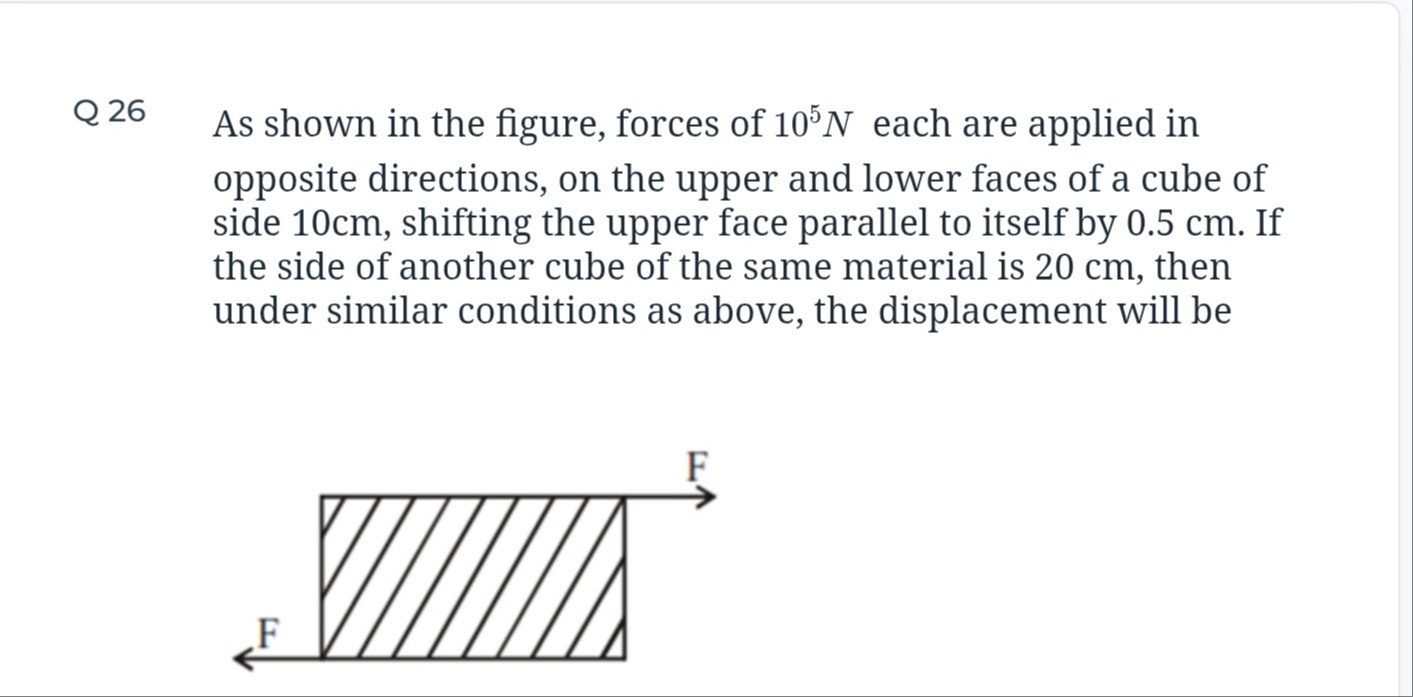Question
Question: As shown in the figure, forces of $10^5N$ each are applied in opposite directions, on the upper and ...
As shown in the figure, forces of 105N each are applied in opposite directions, on the upper and lower faces of a cube of side 10cm, shifting the upper face parallel to itself by 0.5 cm. If the side of another cube of the same material is 20 cm, then under similar conditions as above, the displacement will be

0.10 cm
0.25 cm
0.50 cm
1.00 cm
0.25 cm
Solution
The deformation of the cube under the applied forces is due to shear stress. The relationship between shear stress (τ), shear strain (γ), and shear modulus (G) is given by Hooke's law for shear: τ=Gγ Shear stress is defined as the force (F) applied per unit area (A): τ=AF Shear strain is defined as the ratio of the displacement (Δx) of the upper face to the height (h) of the object: γ=hΔx Substituting these into Hooke's law, we get: AF=GhΔx Rearranging the formula to solve for displacement (Δx): Δx=GAFh For a cube of side length s, the height h is equal to s, and the area of the face A is s2. Thus, the formula becomes: Δx=G⋅s2F⋅s=GsF This shows that for a constant force F and a constant shear modulus G (since the material is the same), the displacement Δx is inversely proportional to the side length s of the cube: Δx∝s1 Let's denote the properties of the first cube with subscript 1 and the second cube with subscript 2. Given for the first cube: Side length s1=10 cm Displacement Δx1=0.5 cm Applied force F1=105 N
Given for the second cube: Side length s2=20 cm The material is the same, so G1=G2=G. The conditions are similar, which implies the applied force is the same: F2=105 N.
Using the proportionality Δx∝s1, we can write the ratio of displacements: Δx1Δx2=F1/(Gs1)F2/(Gs2) Since F1=F2 and G is the same for both cubes: Δx1Δx2=1/s11/s2=s2s1 Now, we can calculate Δx2: Δx2=Δx1⋅s2s1 Substituting the given values: Δx2=(0.5 cm)⋅20 cm10 cm Δx2=(0.5 cm)⋅21 Δx2=0.25 cm
